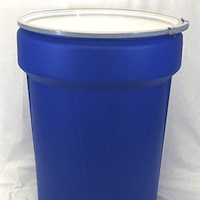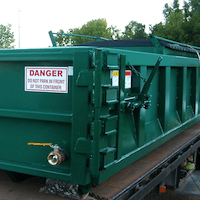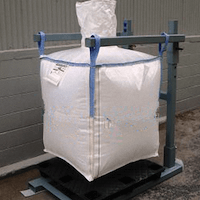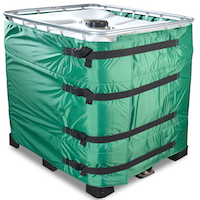Industry Resources
- The National Waste Minimization Program
OSHA and EPA regulations.
29 CFR 1910.22 Clean and Dry Floor Requirements
29 CFR 1910.106 Storage Requirements for Flammable and Combustible Liquids
29 CFR 1910.1200 HazCom and Right-to-Know Requirements
40 CFR 264.175 Containment Requirements - Occupational Safety & Health Administration (OSHA)
1-800-321-6742 | www.osha.gov - Federal Emergency Management Association (FEMA)
(202) 566-1600 | www.fema.gov - DOT: Hazardous Materials Information Center
1-800-467-4922 | www.dot.gov - DOT: Hazardous Materials Spills or Pipeline Leaks
1-800-424-8802 | www.dot.gov - DOT: U.S. DOT’s Transportation Safety Institute
1-800-858-2107 | www.dot.gov - National Response Center Hotline
1-800-424-8802 | www.nrc.uscg.mil - Environmental Protection Agency (EPA)
(202) 272-0167 | www.epa.gov - MSDS Online
888-362-2007 | www.msdsonline.com - United States Coast Guard
N/A | www.uscg.mil - Code of Federal Regulations
888-293-6498 |
www.access.gpo.gov/nara/cfr/cfr-table-search.html - Pipeline and Hazardous Materials Safety Administration | http://www.phmsa.dot.gov/hazmat
Critical Notes Regarding 49 CFR
What it is
The Code of Federal Regulations, Title 49, governs the domestic transportation of hazardous materials for all modes of transport to, from, and within the United States.
Who Is Responsible For It
Title 49 is composed of nine volumes. The volumes containing Parts 100-185 for the transportation of hazardous materials are overseen by the Pipeline and Hazardous Materials Safety Administration, which is part of the U.S. Department of Transportation.
What It Says
The 49 CFR addresses key protocols for preparing, shipping, and handling dangerous goods. Any person handling dangerous goods should read, understand, and comply with all elements of the 49 CFR. Some of the highlights include:
The description of hazardous materials by class, including explosives, gases, flammable and combustible liquids and solids, poisons, radioactive materials, and corrosive agents.
The amount of hazardous materials permitted in certain primary containers as well as the total volume per shipped package.
The types of packages and packaging required to safely transport hazardous materials.
Testing requirements needed to reach specific performance standards.
The documentation required when shipping hazardous materials.
The markings and labels required on packaging and the placards required by the carrier.
Training and safety plan requirements.
For each type of hazardous material, there are specific rules, and it is the role of the shipper to understand the requirements. In particular, Part 173.22 outlines the shipper’s responsibility in preparing hazardous materials for transportation. Among other things, the shipper must ensure:
The product is classified and described properly.
The package or container is an authorized package including being manufactured, assembled, packed, and marked in accordance to regulations.
The package has met all the testing requirements listed in Part 178.
Where To Find It
You can find the entire 49 CFR at Phmsa.dot.gov/regulations.
Dangerous Goods International Links
Link to Dangerous Goods International (DGI) is a leading provider of logistics services for dangerous goods and hazardous materials
Other Useful Sources
Agency for Toxic Substances and Disease Registry
Air & Waste Management Association
Alliance of Foam Packaging Recycling
American Board of Industrial Hygiene
American Chemical Society
American Conference of Governmental Industrial Hygienists
American Industrial Hygiene Association
American Institute of Chemical Engineers
ANSI – American National Standards Institute
ASTM – American Society for Testing and Materials
ASSE – American Society of Safety Engineers
ATSDR – Agency for Toxic Substances and Disease Registry
BASCO Chemical Compatibility Chart For Action Pumps
California Air Resources Board
Canadian Center for Occupational Health & Safety
Canadian Food Inspection Agency
Canada Safety Council
Canadian Standards Association
CDC – Centers for Disease Control and Prevention
Office of Research Safety
Department of Homeland Security
DOL – Department of Labor
DOT – Department of Transportation
EPA – Environmental Protection Agency
EXTOXNET – Extension Toxicology Network
Factory Mutual Research
FDA – Food and Drug Administration
FEMA – Federal Emergency Management Agency
Hazardous Chemicals Database – University of Akron
Hazmat Packaging Guide
Hazmat Regulations
Health Canada
ICC Evaluation Service, Inc.
International Code Council
LBNL – Environment, Health & Safety Division
Los Alamos National Safety Division
National Association of Chemical Recyclers
National Association of Fire Equipment Distributors
National Code Services Association
National Fire Protection Association
National Institute for Occupational Safety and Health – NIOSH
National Institute of Environmental Health Standards – NIEHS
National Institute of Health
National Oil Recyclers Association
National Safety Congress
National Safety Council, USA
National Standards System Network Project
Occupational Safety and Health Administration – OSHA
OSHA Regulations Standards CFR 29 Table of Contents
Periodic Table of Elements (Web Elements)
SEDA – Safety Equipment Distributors Association
Society of Automotive Engineers
Society of Fire Protection Engineers
Society of Plastics Engineers
Transportation Safety Board of Canada
Underwriters Laboratories
U.S. Dept. of Energy – Technical Information Services (TIS)
U.S. Government Code of Federal Regulations

 P.O. Box 8149
P.O. Box 8149